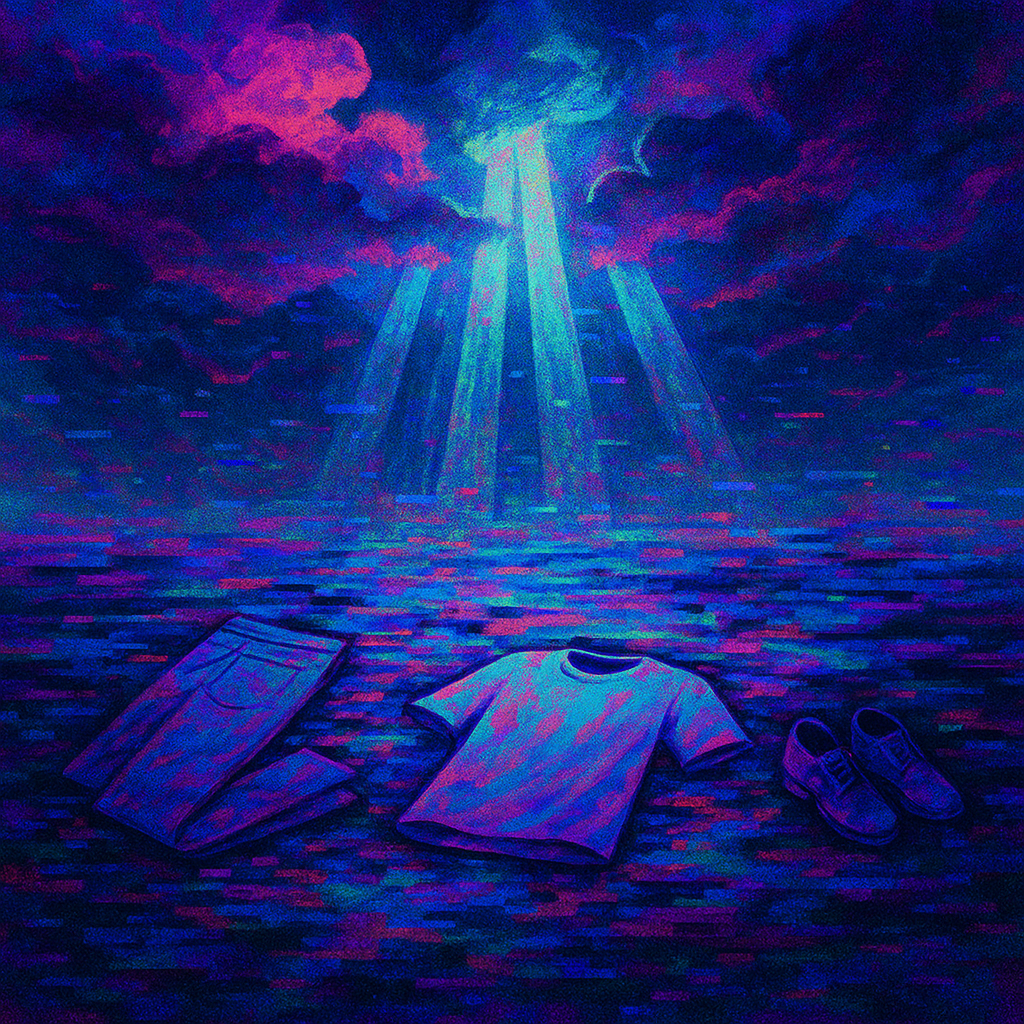
ChatGPT:
The Rapture: How a Fringe Prophecy Became a TikTok Meme
One day you’re sipping a latte at Starbucks, and suddenly—poof—the barista vanishes, leaving only their apron and half-frothed milk behind. That’s the Rapture in a nutshell: a Christian end-times event where the faithful get whisked away to heaven, leaving everyone else to deal with the fallout.
The idea has been terrifying church kids, fueling book sales, and now powering TikTok memes for almost two centuries. Here’s how it went from obscure theology to “Rapture-core” fashion aesthetic.
Origins: A Victorian Thought Experiment
Despite its fame, the Rapture isn’t laid out neatly in the Bible. The seed comes from 1 Thessalonians 4:16–17, where Paul says believers will be “caught up… in the clouds to meet the Lord in the air.” That phrase, translated into Latin as rapiemur, eventually gave us the English word rapture.
But the concept of Christians suddenly disappearing en masse? That’s a 19th-century innovation. Irish preacher John Nelson Darby in the 1830s proposed that Jesus would return in stages: first, secretly removing the faithful, then later coming back for everyone else.
It was fringe at first—one of those theological side quests only scholars cared about. Then came the Scofield Reference Bible (1909), which included Darby’s ideas in its commentary. Suddenly, ordinary churchgoers were reading scripture through Rapture-colored glasses.
Apocalypse Goes Mainstream
By the mid-20th century, the Rapture was ready for Hollywood treatment. With Cold War fears of nuclear annihilation in the background, apocalypse stories sold themselves.
- 1972: A Thief in the Night hit church basements everywhere. A low-budget film, it depicted the terror of waking up to find loved ones gone and the world in chaos.
- 1995–2007: The blockbuster Left Behind novels turned the Rapture into a cultural phenomenon, selling 60+ million copies. The books spawned video games, merchandise, and films starring Kirk Cameron and, later, Nicolas Cage (a casting choice that may itself signal the end times).
By then, the Rapture wasn’t just theology—it was mainstream pop culture. Even people who never cracked open a Bible knew the imagery: empty clothes, driverless cars, pilotless planes.
Why People Love (and Fear) the Rapture
Why does this particular apocalypse endure when others fade? Because it hits several human nerves at once:
- Control in chaos: Life feels random, but the Rapture provides a clean, dramatic ending.
- Fear + hope combo: Believers get reassurance of rescue, while everyone else gets a horror story.
- Ego boost: Imagine the world ending in your lifetime—main character syndrome at its finest.
- Reset fantasy: No more bills, bosses, or taxes. Just clouds, trumpets, and eternal bliss.
It’s scary, flattering, and oddly comforting all at once—a theological three-course meal.
Rapture-core Explained
Fast forward to 2025, and the Rapture has gone digital. On TikTok, it’s not a sermon—it’s content.
Creators post videos of themselves vanishing mid-dance, leaving their hoodies in a heap. POV skits imagine the unlucky “left behind,” raiding Target or trying to explain to HR why half the office is gone. Some fashion-minded users even stage “Rapture-core” layouts, arranging clothes as if their owners just floated into the sky.
Why does it work so well online?
- It’s visual. Empty sneakers tell a whole story in one shot.
- It’s participatory. Anyone can join the trend by faking their own disappearance.
- It’s ambiguous. Are they joking or serious? Doesn’t matter—the mystery boosts engagement.
- It’s endlessly recyclable. Like zombies or UFOs, the Rapture can be remixed forever.
In short, social media took an apocalypse and turned it into a playground.
Who Believes It?
Here’s the split:
- True believers: Millions of evangelicals genuinely expect the Rapture to happen, possibly soon. For them, TikTok jokes are like mocking someone’s wedding day.
- Everyone else: Treat it as meme fodder—funny, creepy, or aesthetic, but not serious.
And that dual life is why the Rapture won’t fade. It functions both as sacred prophecy and internet spectacle.
The Punchline
From a Victorian preacher with an overactive imagination, to blockbuster novels in the ’90s, to Gen Z memes about abandoned Crocs, the Rapture has traveled an unlikely road.
It survives because it adapts: terrifying when preached, thrilling when dramatized, hilarious when memed. At heart, it’s about absence, drama, and the fantasy of being special enough to escape.
So if you see a pile of jeans on your TikTok feed, don’t panic. It’s not divine judgment—it’s just the internet doing what it does best: turning the end of the world into entertainment.
